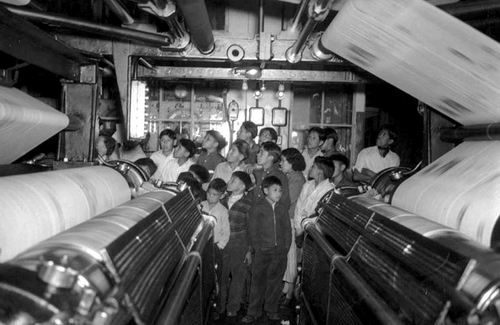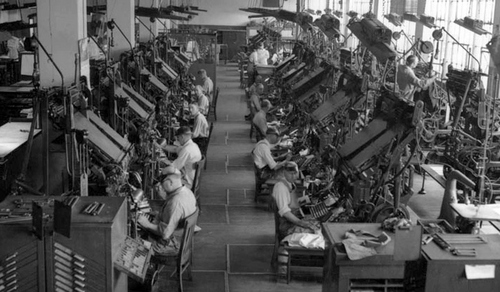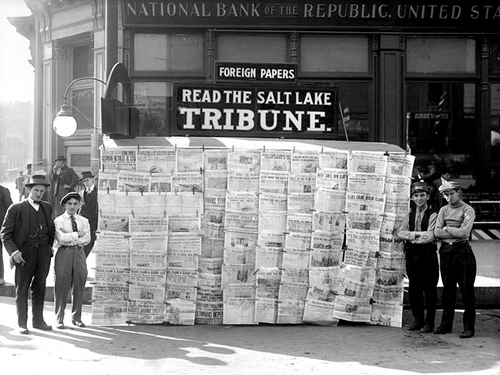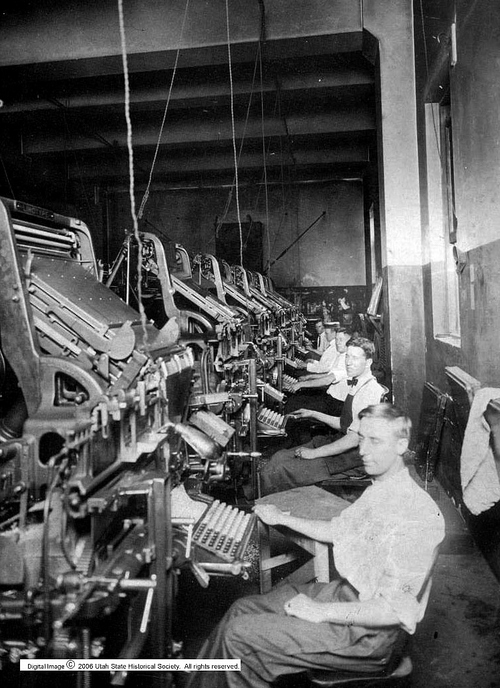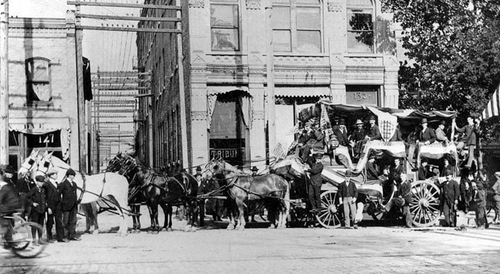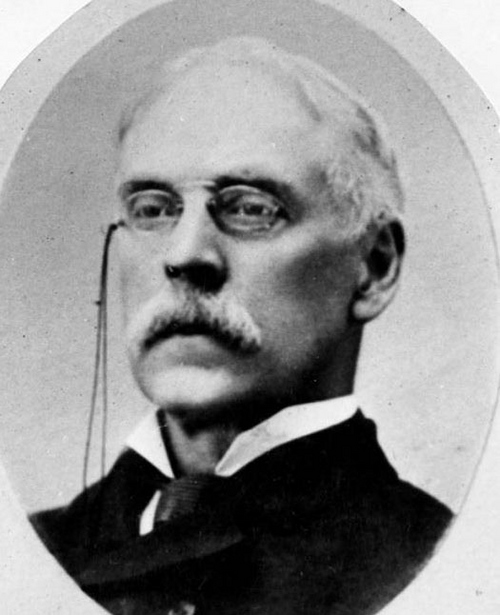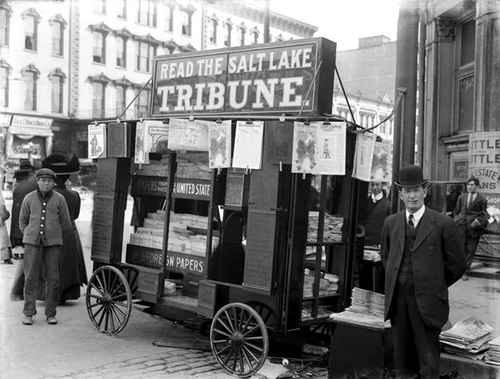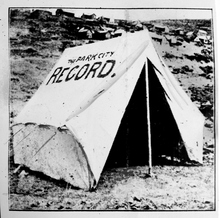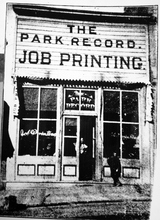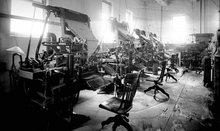Photo Courtesy Utah State Historical Society
A group of American Indian children visiting the Salt Lake Tribune/Telegram plant in
Photo Courtesy Utah State Historical Society
Linotypes at the Salt Lake Tribune office in 1943.
Photo Courtesy Utah State Historical Society
The Salt Lake Tribune building in 1939 at 133 S. West Temple.
Photo Courtesy Utah State Historical Society
Paperboys standing on either side of a newspaper cart, selling the Salt Lake Tribune
Salt Lake Tribune Archive
The Park Record newspaper office and printing press were burned out during the blaze of 1898, but they
Photo Courtesy Utah State Historical Society
Linotype operators in the Salt Lake Tribune composing room in 1906. Linotype machine
Photo Courtesy Utah State Historical Society
The staff and management of the Salt Lake Tribune loaded in a stagecoach, ready for
Photo Courtesy Utah State Historical Society
Charles C. Goodwin (1832-1917) was the editor of the Salt Lake Tribune.
Salt Lake Tribune Archive
The Park Record office and printing press before the devastating fire of 1898 that left much of Park Ci
Photo Courtesy Utah State Historical Society
Salt Lake Tribune newsstand on the southwest corner of the intersection of 200 South
Photo Courtesy Utah State Historical Society
Salt Lake Tribune Linotype Department in 1906. Along with letterpress printing, lino
Photo Courtesy Utah State Historical Society
A group of American Indian children visiting the Salt Lake Tribune/Telegram plant in Whiterocks, Utah in 1939.
Photo Courtesy Utah State Historical Society
Linotypes at the Salt Lake Tribune office in 1943.
Photo Courtesy Utah State Historical Society
The Salt Lake Tribune building in 1939 at 133 S. West Temple.
Photo Courtesy Utah State Historical Society
Paperboys standing on either side of a newspaper cart, selling the Salt Lake Tribune in 1914.
Salt Lake Tribune Archive
The Park Record newspaper office and printing press were burned out during the blaze of 1898, but they didn't miss publishing an issue. A local mining company lent them a tent to use as an office, and The Salt Lake Herald printed their next issue only 5 days later.
Photo Courtesy Utah State Historical Society
Linotype operators in the Salt Lake Tribune composing room in 1906. Linotype machines were first manufactured in 1890. The one shown in the foreground is a newer model and it's operator, Harry C. W. Smith, was brought from Canada to teach operators in Salt Lake. Smith became active in labor movements in Utah.
Photo Courtesy Utah State Historical Society
The staff and management of the Salt Lake Tribune loaded in a stagecoach, ready for a parade to send off four of its own who volunteered for the Spanish American War in 1898.
Photo Courtesy Utah State Historical Society
Charles C. Goodwin (1832-1917) was the editor of the Salt Lake Tribune.
Salt Lake Tribune Archive
The Park Record office and printing press before the devastating fire of 1898 that left much of Park City in ruins.
Photo Courtesy Utah State Historical Society
Salt Lake Tribune newsstand on the southwest corner of the intersection of 200 South and Main Street in 1910.
Photo Courtesy Utah State Historical Society
Salt Lake Tribune Linotype Department in 1906. Along with letterpress printing, linotype was the industry standard for newspapers and magazines from the late 19th century to the 1960s and 70s, when it was largely replaced by offset lithography printing and computer typesetting. The name of the machine comes from the fact that it produces an entire line of metal type at once, a significant improvement over the previous industry standard of manual typesetting.


